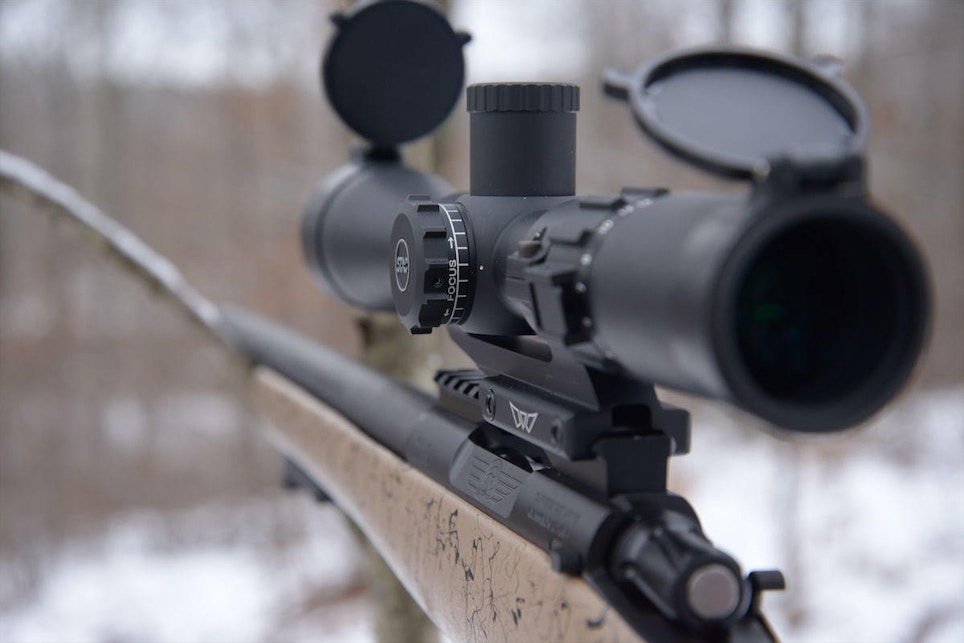The optics category is perhaps the most challenging for shooting sports retailers. This is for myriad reasons, including what can appear to be a fickle demand, explosion in number of brands (many of which come from the same OEMs) and disparity in price points.
Yet optics, to at least some degree, need to be included in any credible inventory for virtually all shooting sports retailers because optics are used in virtually all kinds of shooting and hunting. Among the challenges for the retailer is the wide variety of optics and the many different ways they are used.
Here is where knowing the needs of local customers comes into play. This can be affected significantly if an individual shop focuses on one or a few of the shooting sports as opposed to shooting sports in general.
Regardless of the shop’s focus and/or local clientele, there are a few things to keep in mind when it comes to selling optics efficiently.
Basically, the field can be broken down into three major categories: scopes and other kinds of optical sights (red-dots, etc.), binoculars and spotting scopes. Most sports optics fall within one of these categories.
Beyond that, it’s helpful to break it down further to intended use. There are optics that are most at home on the range, others in personal defense, and probably the biggest category is hunting. There are overlaps in these categories, but the fact remains that there are hundreds, if not thousands, of options when it comes to what a retailer might stock, as well as what in-store expertise the retailer might want to have.
Price and performance are two of the major subcategories. One is obvious while the other is nebulous and very often fully misunderstood because careful wording by marketers can obscure realities.
Certainly, some optics can be sold effectively on price alone. Usually, such optics are at the ends of the pricing continuum. For example, cheap optics are within easy reach of the largest customer base. Interestingly, the highest priced optics also can sell, based solely on price, for those who figure they get what they pay for and are willing to pay for the best.
From a price perspective, this means that the bigger challenge can be selling optics somewhere in between. Often, customers for those price points want more performance than is experienced with the lower-priced models or lines, but don’t want to pay much, if anything, for the additional performance.
Because optics are, for the most part, precision instruments, it is easy to languish adrift in a sea of misunderstanding. Here is where in-store expertise enters the equation. Truly knowledgeable salespeople can be worth a lot more than their costs when they are able to communicate effectively to customers in ways that result in the customer getting what they really want and/or need.
The challenge often is to relate to the customer what the real-life advantages and disadvantages are among various brands or at certain price points. For example, one of the factors that separates top notch binoculars from the crowd is that the two elements (barrels) of the binos are aligned so that there is not eye strain or resultant headache experienced when they are used for long periods of time.
There is no practical way to show that difference in the store. Yet it should be a deciding factor for customers who want to do intensive glassing while hunting. This is where strong in-store expertise is well worth the cost, because customers can get information from someone who has actually used specific makes and models in the real world.
What can be covered in-store is the physical makeup of various models. With a little bit of knowledge, sales staff can explain things like materials and design elements, outlining how better materials used in more robust designs are destined to perform over longer periods of time and in more demanding situations.
Selecting a rifle scope that will fit a particular rifle model best is one instance where knowledge and experience make all the difference. It may sound inane, but more and more riflescopes are designed to be used on AR rifles or other guns with short actions. That’s fine and they work great for those kinds of rifles, but since many of them have main tubes fore and aft of the turret that are quite short, they cannot be fitted onto a long action properly, sometimes not even with offset rings.
Being able to explain this phenomenon and being able to put together the correct combination of rifle/bases/rings/scope accomplishes two things simultaneously. First, it results in upsells for the bases and/or rings. Second, the customer ends up with a rig that works right. It is a classic win-win situation for everyone involved.
When it comes to binoculars and spotting scopes, the situation is much more nuanced in that once the customer’s intended use is determined, it is a matter of figuring out a workable combination of price and features as an overlay to personal preferences of the customer.
Spotting scopes are the easiest to discuss because they are used on tripods, so weight, clarity, magnification range, etc., are usually the determining factors, once a price point for an individual customer is determined.
Binoculars are a bit more complex to sell effectively because in addition to size, magnification and weight, how the particular unit fits the individual end user’s hands can be critical.






